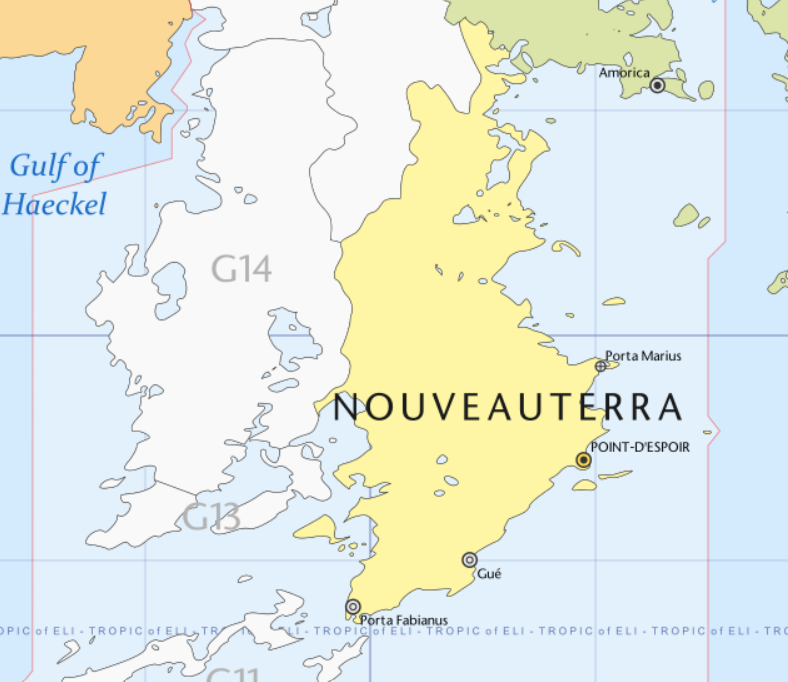Leaderboard
Popular Content
Showing content with the highest reputation on 02/08/24 in all areas
-
Government and Politics National Government Structure The structure of federal government is based on The Constitution of the Commonwealth, written and ratified in 1105. It is a government with three distinctive and differently empowered sections. This includes La Bureau du Président as the executive section, Le Grande Assemblée des États Continentaux (simply referred to as Le Grande Assemblée) as the legislative section, and La Tribunal Suprême as the judicial section. Le Bureau du Président is the chief executive body of government, and holds the head of state, the President. Besides being the representative government figure for the country to the world, the President also has a wide range of executive powers. The President: proposes the national budget. They nominate supreme judges, and departmental judges, consulates, special officers, armed forces leaders, and the prime minister. They also approve nominated ministers, bills, and laws. Lastly, they are the supreme commander of the armed forces during wartime. The President can do a number of different special procedures, like initiating a military intervention, but this requires a vote by Le Grande Assemblee. Le Grande Assemblée is a bicameral legislative body which holds the majority of law, treaty, taxation, warfighting, trading, and regulation authority in the nation. The first part, the Lower Assembly, is composed of many burgesses, with one representative for every 100,000 citizens, apportioned based on electoral districts proportionally spread throughout the nation. To date, 100 burgesses perform duties in the Lower Assembly. The second part, the Upper Assembly, is composed of two councilors for every state in the commonwealth. Currently 60 councilors perform duties in the Upper Assembly, with 36 of the councilors being representatives of island states in the nation. Bills, laws, and budgets must originate in the Lower Assembly, then pass through voting to the Upper Assembly, receive the necessary votes, then finally be forwarded to the Bureau du Président for signing. Le Grande Assemblée also holds the Office of the Prime Minister. The Prime Minister is nominated by the President, and must be confirmed by the Upper Assembly by majority vote. Their main role is as the head of government. They facilitate discussion, votes, and committee assignments. They also control the Office of the Baculus, which is the main law enforcement body within Le Grande Assemblée, offering protection to the premises and the people inside. They can sometimes be assigned to head special projects, and carry the full weight and authority of the Presidency if such power is dispensed by the President. La Tribunal Suprême is a system of three courts. Regnum Court, which oversees federal criminal cases and initial appeals for regnus, or regions. A departmental court, which oversees appeals from different conjoined sections of regnus. And a supreme court, which oversees appeals which reach it from a departmental court, or from a state supreme court. The nation has a number of political structures, tied together by tiers of increasing authority. These chains of authority are Local, Regional, and Federal. Here is a diagram to show these structures: Elections Elections are held on the first Monday of October every two years. It is considered supra scrutinium, meaning anyone can cancel a legal obligation, or work obligation, in order to vote. Many different offices of the land fall on one of four term lengths; two, four, six, and eight years. Here is a list of some offices that fall into these categories: 8 6 4 2 Court Justices (2 term max) Vigil (sheriffs) (Unlimited) Administrators (canton) (2 terms max) Presidents (2 terms max) Councilors (Unlimited) Regius (2 terms max) Chefs and Mayors (Unlimited) Prime Ministers (Unlimited) Berges (Unlimited) Special officers or appointments often come with strict term limits, and service times. In some cases, a superseding authority can appoint an individual to fulfill an office role caused by a vacancy for the duration of the term until a newly elected person is placed in the office. Political Parties There are six major registered political parties in Nouveaterra, listed here: Party Name Ideology Founded Ligue de l'Accord Capitalist Con. 1321 La Sécurité Sociale Capitalist Lib. 1329 La Ligue Populaire Socialist 1330 Les Gens des Collines Libertarian 1391 Terre et Mer Environment. 1396 Le Parti de la Patrie Radical Con. 1412 Here are the results of elections held in 1423, which selected burgesses, councilors, the prime minister, and the president. [lore to come]2 points
-
The Southern Belt is characterized by three main climatic and topographic areas. The Southern Belt’s northernmost areas are characterized by semi arid mountains and highlands. These wind and rain eroded areas don’t retain much water, but trap moisture from the tropical easterlies, which contributes to the climate areas further south of it. Small birds and mammals inhabit the area. The central area of the Southern Belt, or La Boucle, is characterized by subtropical grasslands, with rich soil and persistent rainfall throughout the year. Areas with this kind of climate are also high in altitude, leading to the presence of some migratory birds from similar altitude ranges appearing from nearby regions. The southernmost areas of the Southern Belt are characterized by very dense forests, with lots of rain and moisture coming from easterly winds, and tributary rivers feeding the area. Much of this space has dense urban development, but some areas like the Olivier National Preserve pictured here, retain some of the old vegetation and wildlife. L’Immensité is just as its name suggests. The heart of the country is characterized by a large area with the same mostly arid desert. Few plants, animals, or people call this place home because of its poor soil and even poorer rainfall retention. It is however known for its large natural salt deposits. The Northern Tier is characterized by two main climatic and topographic areas. Terre de Braconnier is an area of highland and lowland with limited shrub growth and wildlife, as the great mountain ranges nearby retain some water. A few people and animals call this place home, mostly because of its seclusion. Le Bonneterre encompasses the northernmost areas of the country. It’s characterized by a mix of well watered broad-leaf and coniferous highlands and lowlands.2 points
-
Commonwealth of Nouveauterra République de Nouveauterre (Terrenaise) National Flag Seal Anthem: Un En Lute (One in Struggle) Government Information Capital Pointe-d'Espoir Official Languages Terrenaise Dhuku Common Head of State President Guy Laclare Head of Government Prime Minister Martin Toro Legislature Le Grande Assemblee Upper Assembly Lower Assembly Judiciary La Tribunal Suprême History 890 - 1100 AF colony of the Principality of Saint Mark 1101 - 1104 AF Revolution against the Principality of Saint Mark 1105 - 1254 AF First Assemblee 1254 - 1259 AF Le Guerre Civil 1259 - present Second Assemblee Statistics Land Area 527,019 km2 Population (1424) 10,011,368 Density: 19.0 km2 GDP $322,175,820,245 Per Capita: $32,181 International Figures Currency Marque Terrienne (mT) Time Zone Overtime IAT+1 Driving Side Right Country Codes NOV, NO Calling Code +4 042 points
-
1 point


.thumb.jpeg.384689e3ec6b908236e40d7757d00d0d.jpeg)





.thumb.png.155cee90e53138825bdaa165f7ba23d4.png)



.thumb.png.a747b3722faa51a59eb42d309fa3ca23.png)
.thumb.png.dda7c5644fd30f6ddf09fd92fcdb0c0e.png)

.png.53922d799a9c62e87a762fde3972d8c8.png)



